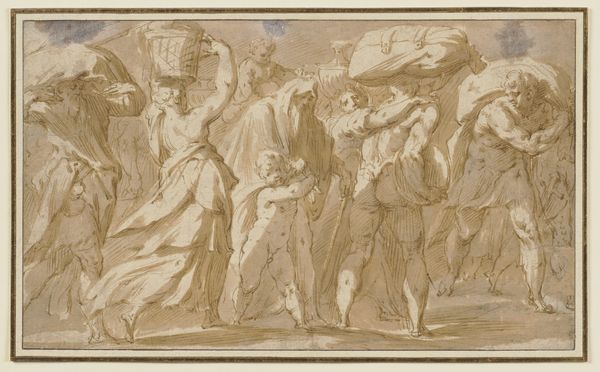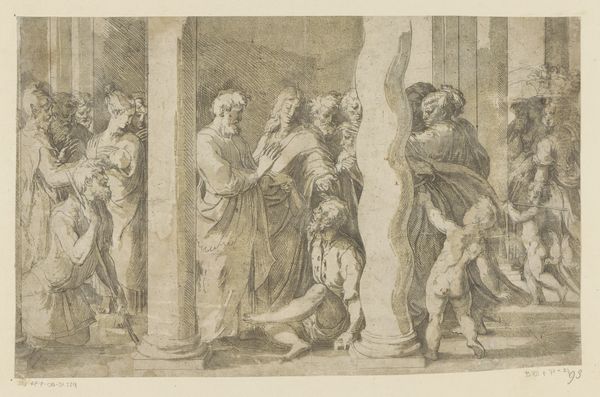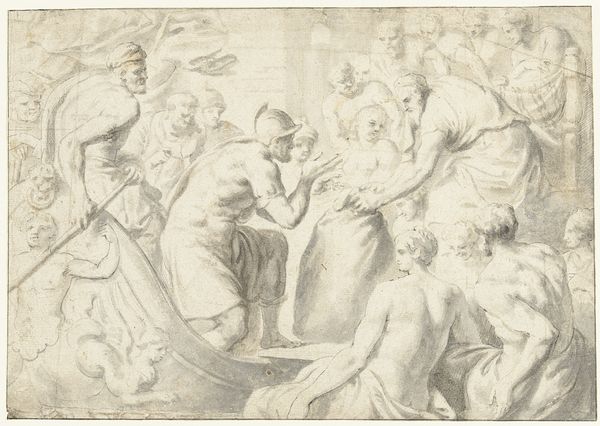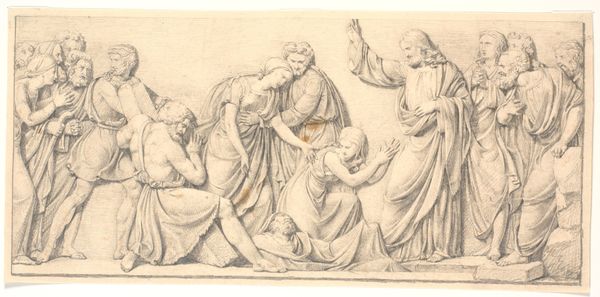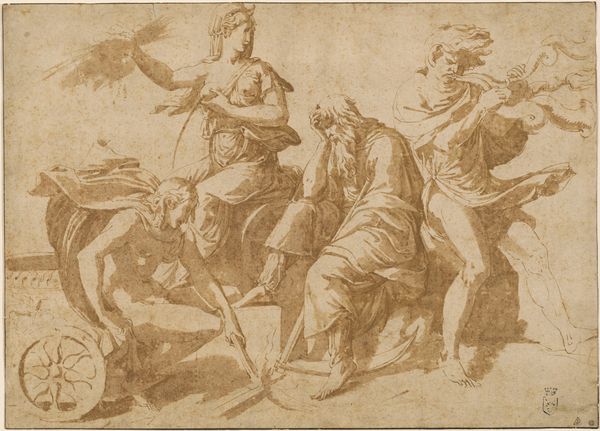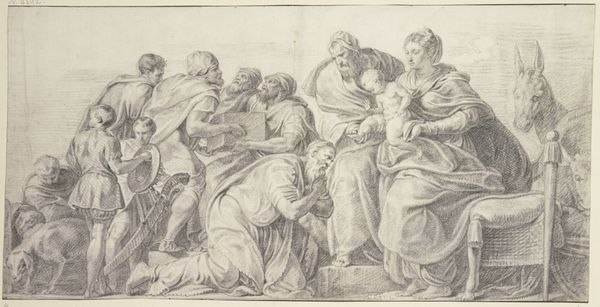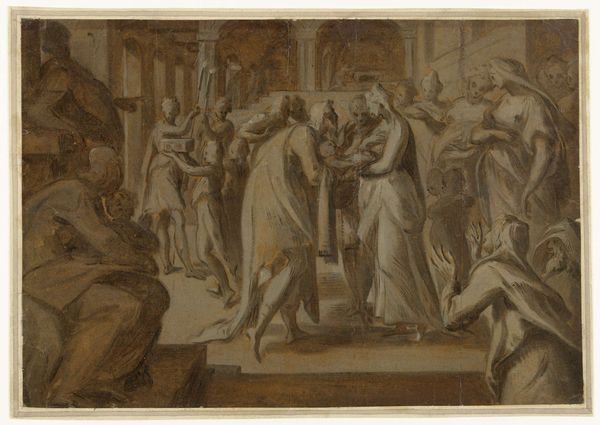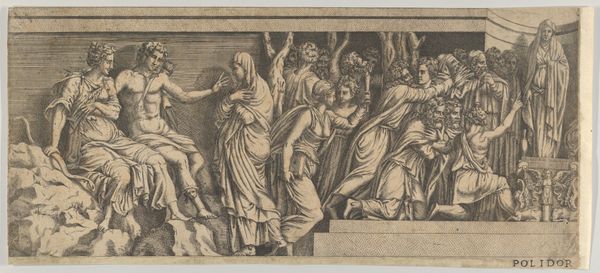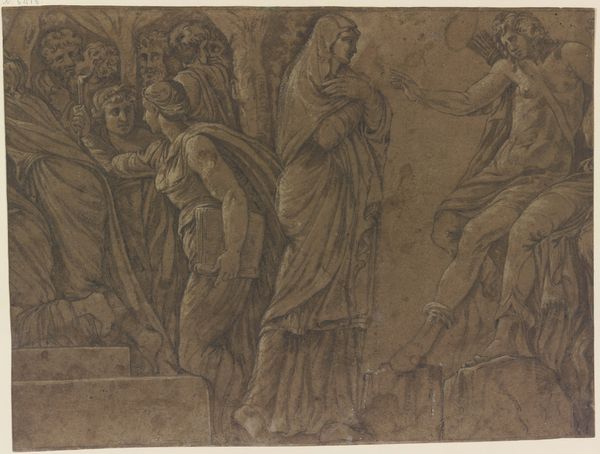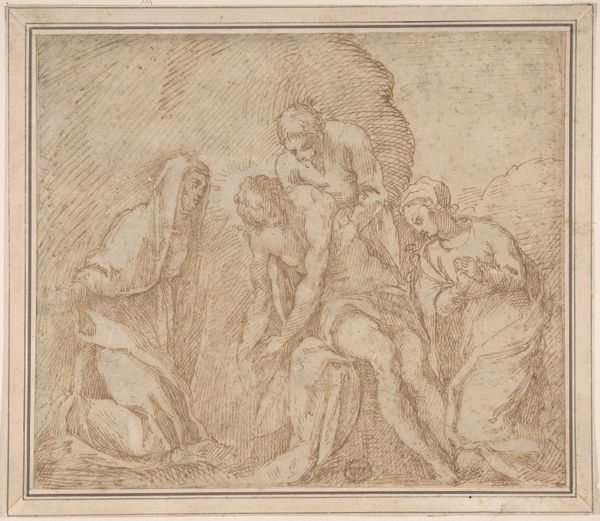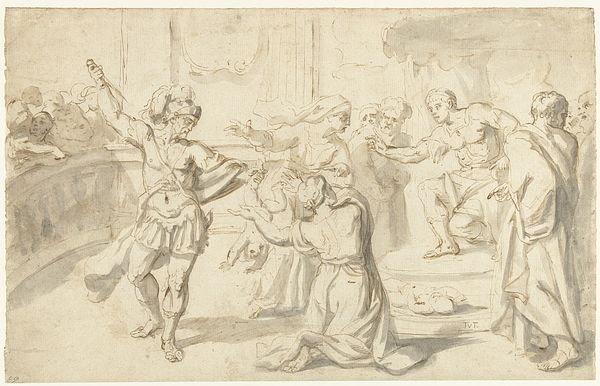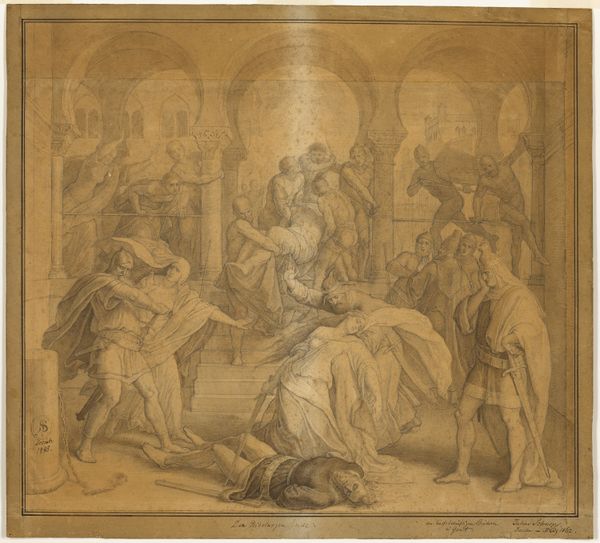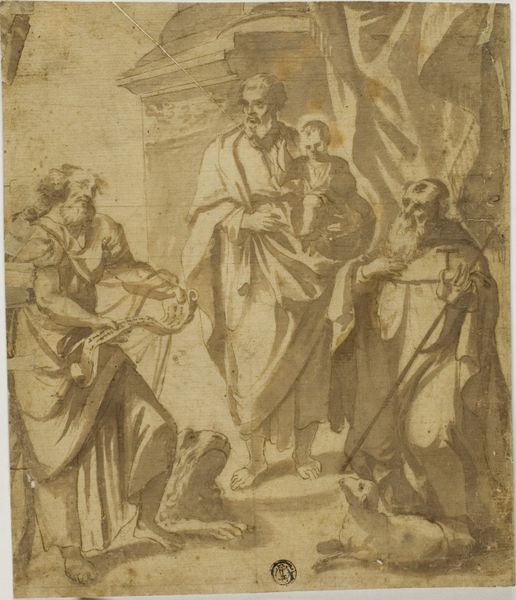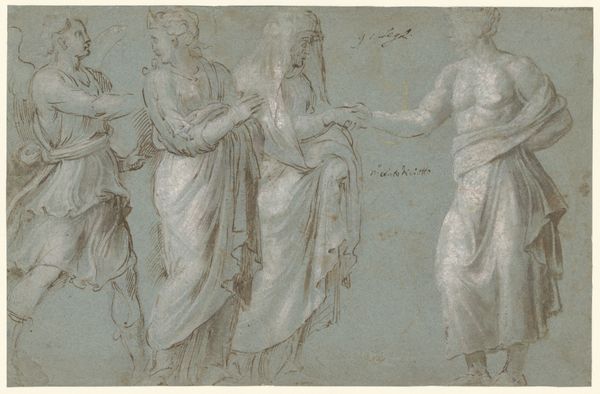
drawing, print, paper, ink, charcoal
#
drawing
#
allegory
# print
#
sculpture
#
charcoal drawing
#
mannerism
#
paper
#
charcoal art
#
oil painting
#
ink
#
charcoal
#
history-painting
#
angel
Dimensions: 11 3/4 x 16 1/2in. (29.8 x 41.9cm)
Copyright: Public Domain
Editor: We're looking at "The Holy Women at the Sepulchre," a drawing by Sisto Badalocchio from around 1585 to 1620. It's rendered in ink and charcoal on paper. I'm struck by the delicate lines and the somber mood created by the muted tones. What stands out to you in this work? Curator: What grabs my attention immediately is the paper itself. Consider its source: rags, likely recycled textiles. This humble material becomes the foundation for representing a pivotal religious narrative. Badalocchio transforms this discarded commodity into something of high artistic value. What do you make of that transformation, given the context of religious imagery? Editor: That's interesting, I hadn't thought about the paper itself. It feels almost like an act of… elevation? Like giving new life to something ordinary, much like the resurrection it depicts. Curator: Exactly. Now, let's look at the figures. The robes they wear – how are they rendered? Think about the time it would take to create those lines, that shading with charcoal and ink. Is there anything to discern about the artist's investment and the act of creating this work by hand? Editor: Well, the draping of the cloth looks very deliberate and intricate. It definitely seems to communicate value and effort – like the artist is emphasizing the weight and substance of their grief or piety. Also, I see writing just below the sepulchre, in what seems to be Italian, how would you describe that, exactly? Curator: Yes! Knowing that the text on the drawing identifies Louis Ganzi as the former owner suggests something more of the appreciation of its value as a collectable object and investment as well. Ultimately, the print represents an economy based on a religious and emotional context as an interaction of a product’s creation, transaction, and value in material, devotional, and commercial forms. Does this layered interpretation affect how you view the drawing now? Editor: Definitely. It's not just a religious scene anymore. It’s a historical artifact reflecting economic realities, the artist's labor, the materials used, all tied into the narrative. Thank you for shedding light on this. Curator: And thank you for considering the work from a fresh perspective. It is about bridging that divide between the holy and the material, labor, and social practices.
Comments
No comments
Be the first to comment and join the conversation on the ultimate creative platform.
